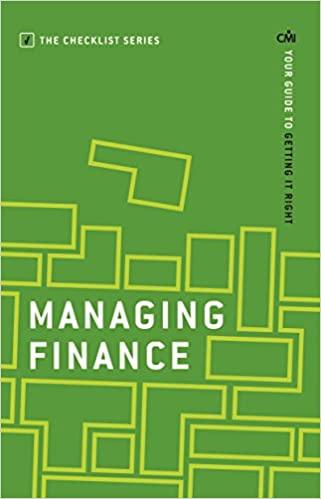Question
2. Capital Budgeting (25 marks) Consider the following information. In order to satisfy a sharp increase in demand, WES is evaluating investing in one of
2. Capital Budgeting (25 marks) Consider the following information. In order to satisfy a sharp increase in demand, WES is evaluating investing in one of two mega warehouse projects in Australia (called Project A and Project B). WES has already identified two existing warehouses that might meet their needs. In order to mitigate risk and assess these facilities, WES asked Axiom Ltd to conduct technical due diligence. Axiom is asking $100,000 as a fixed fee for its consulting services. Project A has an initial outlay of dollars $150 million and Project B has an initial outlay of $85 million. Project A will generate additional revenues of $45 million starting at the end of year 1 until the end of year 10. It will also incur additional working capital expenses of $1 million immediately, this working capital will be recovered at the end of the project. Project B will generate additional revenues of $25 million starting at the end of year 1 until the end of year 10. It will also incur additional working capital expenses of $2 million immediately, this working capital will be recovered at the end of the project. The operating costs of both projects will be 30% of the revenues from years 1 to 10. Both investment projects will be depreciated on a straight line basis over ten years to zero book value. WES has estimated that the mega warehouse can be sold at the end of year 10 respectively for $125 million (Project A) and $100 million (Project B). The tax rate is 30%. All cash flows are annual and are received at the end of the year. The weighted average cost of capital for both projects is 6%. a) Calculate the FCFs for each project. (10 marks) b) What is the NPV for each project? (5 marks) c) What is the discounted payback period for each project? (2.5 marks) d) What is the IRR for each project? (2.5 marks) e) Assume that the risk of investing in these mega warehouses is higher than the overall risk of the company. What would happen to the discount rate and consequently NPV of the two projects if this was the case? Why? (2 marks) f) Suppose that WES has a payback rule of 7.5 years. Based on your analysis in b), c) and d) which project should be chosen? Justify your answer with reference to theory. What other factor might affect the final decision?
Step by Step Solution
There are 3 Steps involved in it
Step: 1

Get Instant Access to Expert-Tailored Solutions
See step-by-step solutions with expert insights and AI powered tools for academic success
Step: 2

Step: 3

Ace Your Homework with AI
Get the answers you need in no time with our AI-driven, step-by-step assistance
Get Started


